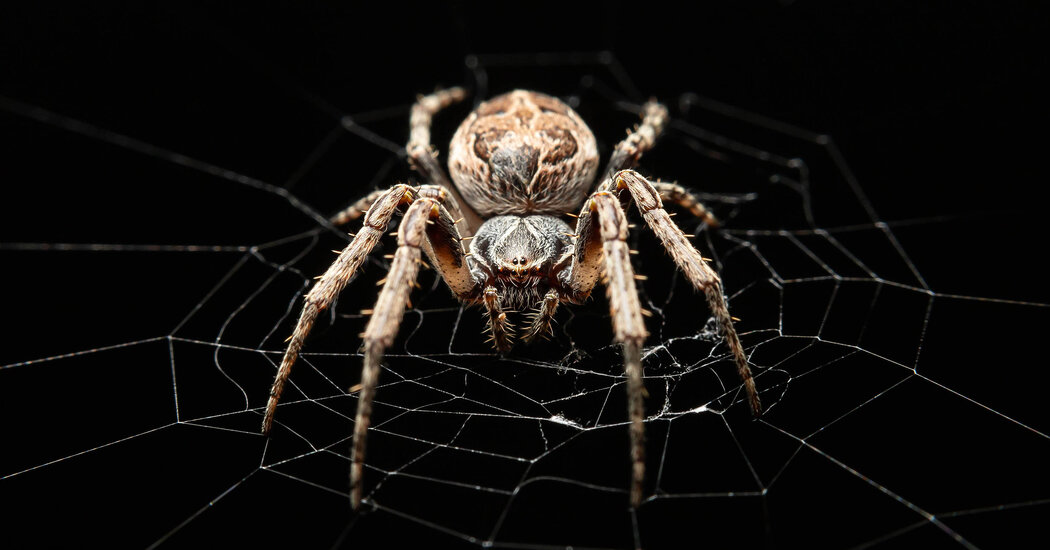Engineers and scientists have an enduring fascination with spider silk. Similar to the typical silkworm silk from which comfortable sheets are made, but much stronger, the material inspired the invention of lighter, more breathable body armor and materials that could make aircraft components stronger without adding weight. Researchers are even using examples from spider webs to design sensitive microphones that may one day be used to treat hearing loss and deafness and to improve other listening devices.
Spiders use their webs like huge external eardrums. A team of scientists from Binghamton University and Cornell University reported in 2022 that the webs allow the arachnids to detect sound from 10 feet away.
When you hear a sound through your ear, what you're actually experiencing are changes in air pressure that cause the eardrum to vibrate. This is how microphones work: by mimicking the human ear and vibrating in response to pressure.
Cobwebs serve a similar purpose but use a different mechanism.
Instead of vibrating when hit by a pressure wave, like a stick hitting a drum head, they move with the shifting airflow. Air is a fluid medium “like honey,” said Ronald Miles, a professor of mechanical engineering at Binghamton. Humans navigate this environment without noticing much resistance, but the silk fibers are whipped around by the speed of viscous forces in the air.
Dr. Miles couldn't help but wonder if this principle could lead to a new type of microphone.
“Human beings are arrogant animals,” he said. “They make devices that work like them.” But he wondered whether to build a device that looked more like a spider and sensed “sound with the movement of air.”
He and his colleagues – including Jian Zhou, also a professor of mechanical engineering at Binghamton, and Junpeng Lai, a postdoctoral researcher – designed and built a microphone inspired by the principles of natural spider silk. They presented their research Thursday at the 186th meeting of the Acoustical Society of America in Ottawa.
The researchers' device consists of an extremely thin cantilevered shaft (like a trampoline) made of silicon that responds to the minute fluctuations in airflow created by sound. To turn it into something humans can feel, a laser measures the rod's subtle movements, like a spider decoding its web.
One drawback of typical pressure-sensing microphones, Dr. Miles said, is that improving them often means making them bigger. He thinks of the large microphones you see in a recording studio, compared to the thin headphones used by a motivational speaker. With a spider-inspired microphone that responds to airflow rather than pressure, Dr. Miles said, “you can make it a little smaller without paying a price.”
Helping people feel could be the natural next step.
Somewhat counterintuitively, our ears make sounds when they vibrate in response to pressure. With funding from the National Institutes of Health, Dr. Miles' team will develop a probe that measures these very quiet otoacoustic emissions. This could help detect hearing problems in a child's ear early, for example, and “then treatments for this problem can be started,” Dr Miles said.
Another advantage of sensing airflow rather than pressure to measure sound is that it can be used to locate the source of the sound. This could improve hearing aids designed to pick up sounds coming from a specific location in a noisy environment, Dr Miles added.
Anna Rising, a spider silk researcher at Karolinska Institutet in Sweden who was not involved in the study, agrees that spider silk has potential medical applications. It is known for its robustness, he said, but is also “well tolerated when implanted and has been shown to allow peripheral nerve regeneration” in animal experiments.
Dr. Miles is excited to use a web-inspired microphone to detect infrasound, which is below the range of human hearing. This could be useful for tasks such as tornado monitoring.
“Being able to localize the sound of those very low frequencies is really difficult with pressure microphones,” he said. “With a velocity-sensing microphone, you could do this very easily.”
Spider-inspired microphones still have a long way to go before they're ready for the mainstream. But the team already has a patent, and Dr. Miles is advising a Canadian company on building new types of microphones.
And if the research bears fruit, perhaps humans could finally free themselves from the prejudices that lead to devices inspired by our bodies, making way for further inventions drawn from the way spiders and other creatures perceive the world.





